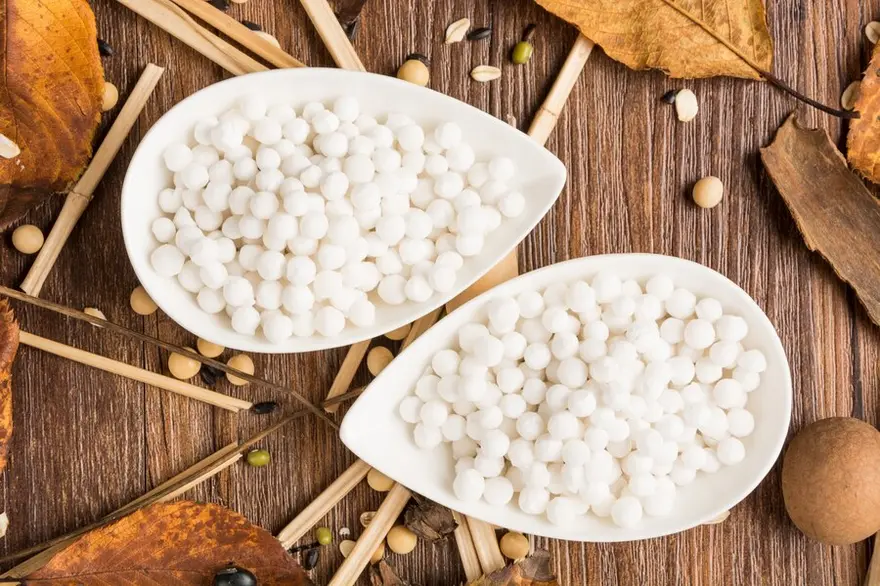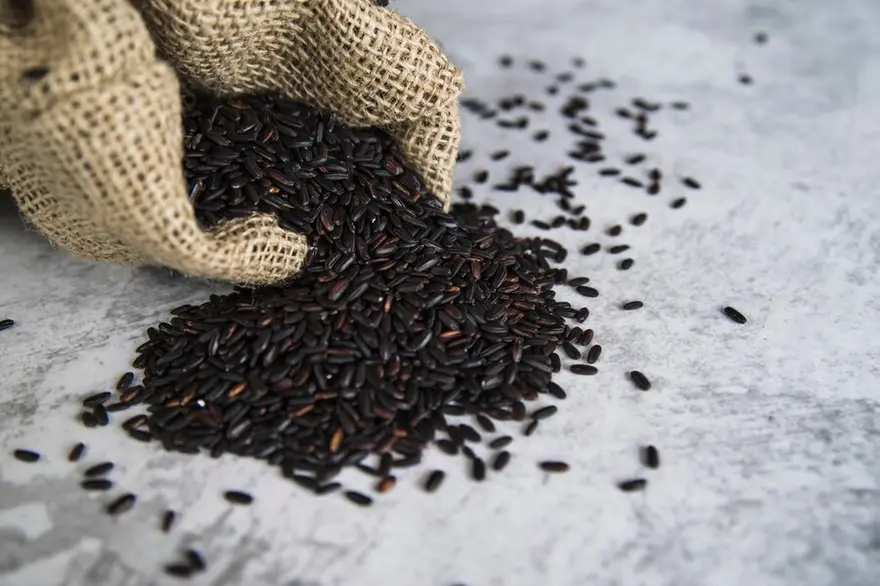Preventive Healthcare
Is Sabudana Good in Diabetes?
104 Views
0

Sabudana, or tapioca pearls, is a staple food in various cultures, often consumed during fasting periods. While it is a staple food, people with diabetes often wonder about sabudana's nutritional value or is sabudana good for diabetes. This article examines the nutritional properties of sabudana and its suitability for diabetes management. Key factors such as its glycemic index and carbohydrate content will be explored to assess its effect on blood glucose levels. Additionally, practical tips for incorporating sabudana into a diabetes-friendly diet will be provided, enabling balanced consumption while managing blood sugar effectively.
Nutritional Value in Sabudana
Sabudana is primarily composed of carbohydrates with minimal fibre and protein. A 100-gram serving of sabudana contains approximately:
- 88 grams of carbohydrates
- 0.2 grams of fat
- 0.1 grams of protein
- 0.9 grams of fibre
As you see, while sabudana is a good source of energy due to its high carbohydrate content, it lacks significant amounts of fiber and protein. However, it does contain essential minerals like:
- Calcium: 20 mg
- Iron: 1.6 mg
- Potassium: 11 mg
Properties of Sabudana
Sabudana, or tapioca pearls, possesses specific properties that are significant for diabetic patients to consider:
- High Glycemic Index: Sabudana has a medium to high glycemic index (GI), typically ranging from 67 to 80. Foods with a high GI can cause a rapid increase in blood sugar levels, making it necessary for individuals with diabetes to monitor their intake carefully.
- Gluten-Free: Naturally gluten-free, sabudana is an excellent dietary option for individuals with celiac disease or gluten sensitivity. It can be incorporated into various recipes without triggering adverse gluten-related reactions.
- Quick Energy Source: With its high carbohydrate content, sabudana serves as a quick source of energy. This property can be particularly beneficial for active individuals or those needing an energy boost during fasting periods.
Understanding these properties can help determine the appropriate inclusion of sabudana for diabetic patients in a diabetes-friendly diet.
Is Sabudana Good for Diabetes?
Sabudana, a popular ingredient in many diets, poses challenges for individuals with diabetes due to its high carbohydrate content. While not inherently harmful, its impact on blood sugar levels depends on portion control, preparation methods, and pairing with low-glycemic foods. Understanding these factors can help manage its effects within a diabetes-friendly diet.
High Glycemic Index Concerns
Sabudana has a glycemic index of 67 to 80, classifying it as a medium to high-GI food capable of causing rapid spikes in blood sugar levels. This makes it a concern for diabetic individuals, as it can lead to significant glucose fluctuations. To reduce its impact, sabudana should be consumed in moderation and paired with fibre-rich vegetables, protein sources, or healthy fats. These additions help slow glucose absorption, making it possible to enjoy sabudana occasionally while managing blood sugar effectively.
Role of Portion Control
Portion control is essential when consuming sabudana for diabetes management. Small quantities can limit blood sugar spikes while still providing energy. Careful monitoring ensures sabudana remains part of a balanced, controlled diet without adversely affecting glucose levels.
Benefits When Paired Properly
When paired with low-glycemic foods such as vegetables, nuts, or legumes, sabudana becomes a more diabetes-friendly option. These combinations provide fibre, protein, and healthy fats, which slow the absorption of glucose into the bloodstream, reducing the likelihood of sharp blood sugar spikes. For instance, mixing sabudana with non-starchy vegetables or combining it with yogurt creates a balanced, nutritious meal.
Additionally, cooking techniques like steaming or minimal frying help preserve its nutritional benefits while avoiding excess fats. Such pairings and preparations enable individuals with diabetes to incorporate sabudana into their diet occasionally, enjoying its energy-boosting properties while maintaining better blood sugar control and overall dietary balance.
Risks of Sabudana for Diabetic Patients
Sabudana for diabetic patients poses specific risks due to its high carbohydrate content and glycemic index.
- Blood Sugar Fluctuations: Regular or excessive consumption of sabudana can cause significant blood sugar spikes and fluctuations, complicating diabetes management and increasing the risk of uncontrolled glucose levels.
- Nutrient Displacement: A diet overly reliant on sabudana may displace nutrient-rich foods, resulting in an unbalanced intake that lacks essential vitamins, minerals, and fibre. This can negatively affect overall health and make it harder to meet dietary needs while managing blood sugar effectively.
Tips for Diabetics Consuming Sabudana
- Monitor Blood Glucose: Keep track of blood sugar levels before and after eating sabudana to assess its effect. Utilise a glucometer or continuous glucose monitor as recommended by your healthcare provider to maintain optimal control.
- Pair with Nutrient-Dense Foods: Enhance sabudana’s nutritional value by combining it with non-starchy vegetables, lean proteins like chicken or tofu, or healthy fats such as nuts or seeds. These additions slow digestion, stabilise blood sugar levels, and make meals more diabetes-friendly.
- Practice Moderation: Limit sabudana consumption to occasional meals rather than making it a staple in the diet. Focus on incorporating a variety of nutrient-dense foods, including whole grains, legumes, and leafy greens, to ensure balanced nutrition and better blood sugar management.
Alternatives to Sabudana for Diabetics
Diabetic individuals seeking alternatives to sabudana can explore several nutrient-dense, low-glycemic options that provide energy without causing significant blood sugar spikes:
- Quinoa: A high-protein, fibre-rich grain with a low glycemic index, quinoa offers sustained energy and is versatile in meals.
- Millets: Varieties like foxtail, finger, and pearl millets are low in GI and high in fibre, making them suitable for porridges or savoury dishes.
- Chia Seeds: These nutrient-dense seeds are rich in fibre, omega-3 fatty acids, and protein. They can be soaked and used in puddings or smoothies.
- Barley: With a low GI and high fibre content, barley can be a great substitute in soups, salads, or as a rice alternative.
- Sweet Potatoes: A lower-GI alternative to regular potatoes, sweet potatoes provide energy while maintaining better blood sugar control when consumed in moderation.
These options offer healthier, balanced choices for managing diabetes effectively.
FAQs
Is sabudana good for weight loss and diabetes?
While sabudana is low in fat and can provide energy, its high carbohydrate content and glycemic impact make it less suitable for weight loss and diabetes management when consumed regularly. Focus on nutrient-dense, fiber-rich foods for better results.
Can sabudana be included in a low-carb diet?
Sabudana is high in carbohydrates, making it unsuitable for a strict low-carb diet. If following a low-carb approach, it's best to limit or avoid sabudana and opt for lower-carb alternatives like vegetables, nuts, and seeds.
How to calculate the right portion of sabudana for a diabetic-friendly meal?
A general guideline is to limit the serving size to about 1/2 cup of cooked sabudana per meal. However, individual needs may vary based on factors like age, weight, activity level, and blood sugar control. Consult with a registered dietitian or certified diabetes educator to determine the appropriate portion size for your specific needs.
Conclusion
While sabudana's nutritional value includes essential minerals, its high glycemic index and carbohydrate content make it a food that people with diabetes need to be cautious about. Sabudana for diabetes can be included occasionally in small portions, paired with fiber-rich and protein-dense foods. However, regular monitoring of blood sugar levels and consultation with healthcare professionals are crucial for effective diabetes management.
If you have concerns about your blood glucose control or need personalised dietary advice, consider availing of the reliable diagnostic services and health check-ups offered by Metropolis Healthcare. With a wide network of labs across India, experienced phlebotomists for at-home sample collection, and convenient online reporting, Metropolis is committed to providing accurate results and supporting you in your journey towards better health.












1701259759.webp)









 WhatsApp
WhatsApp